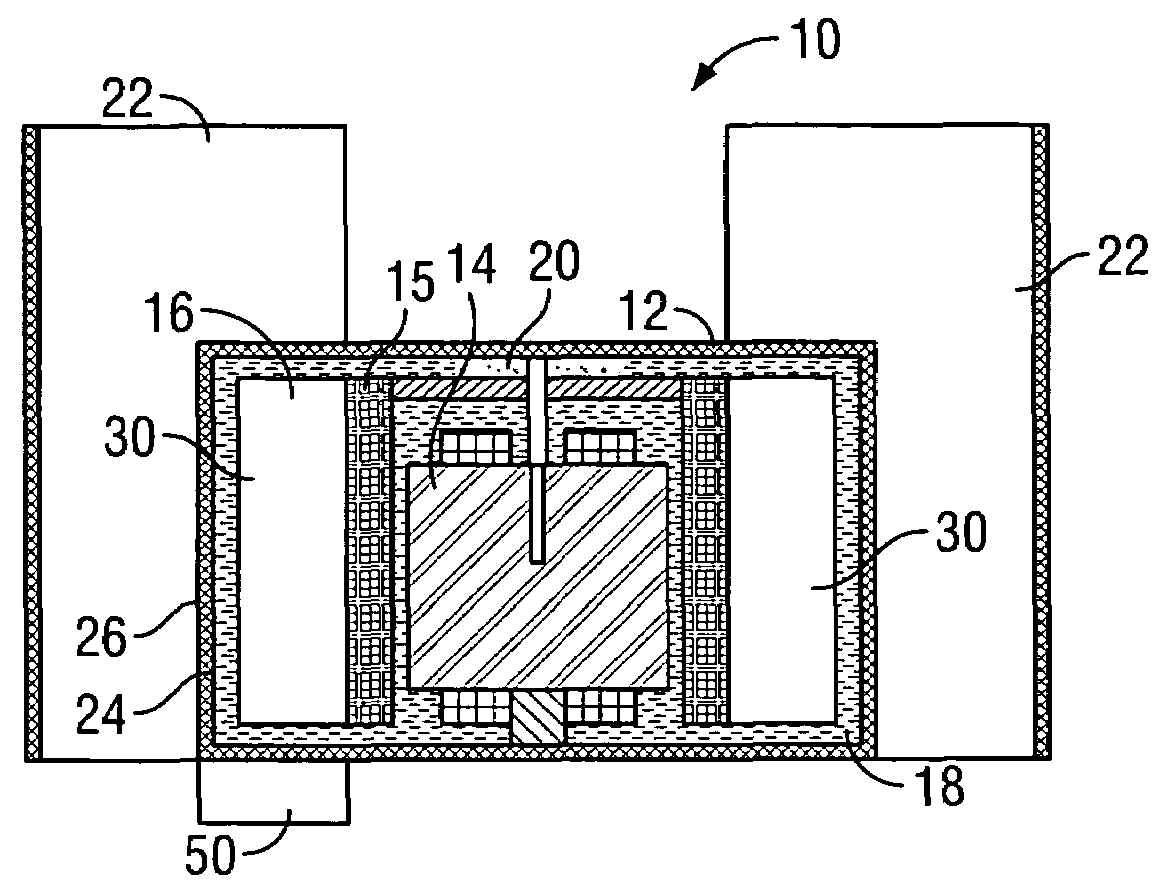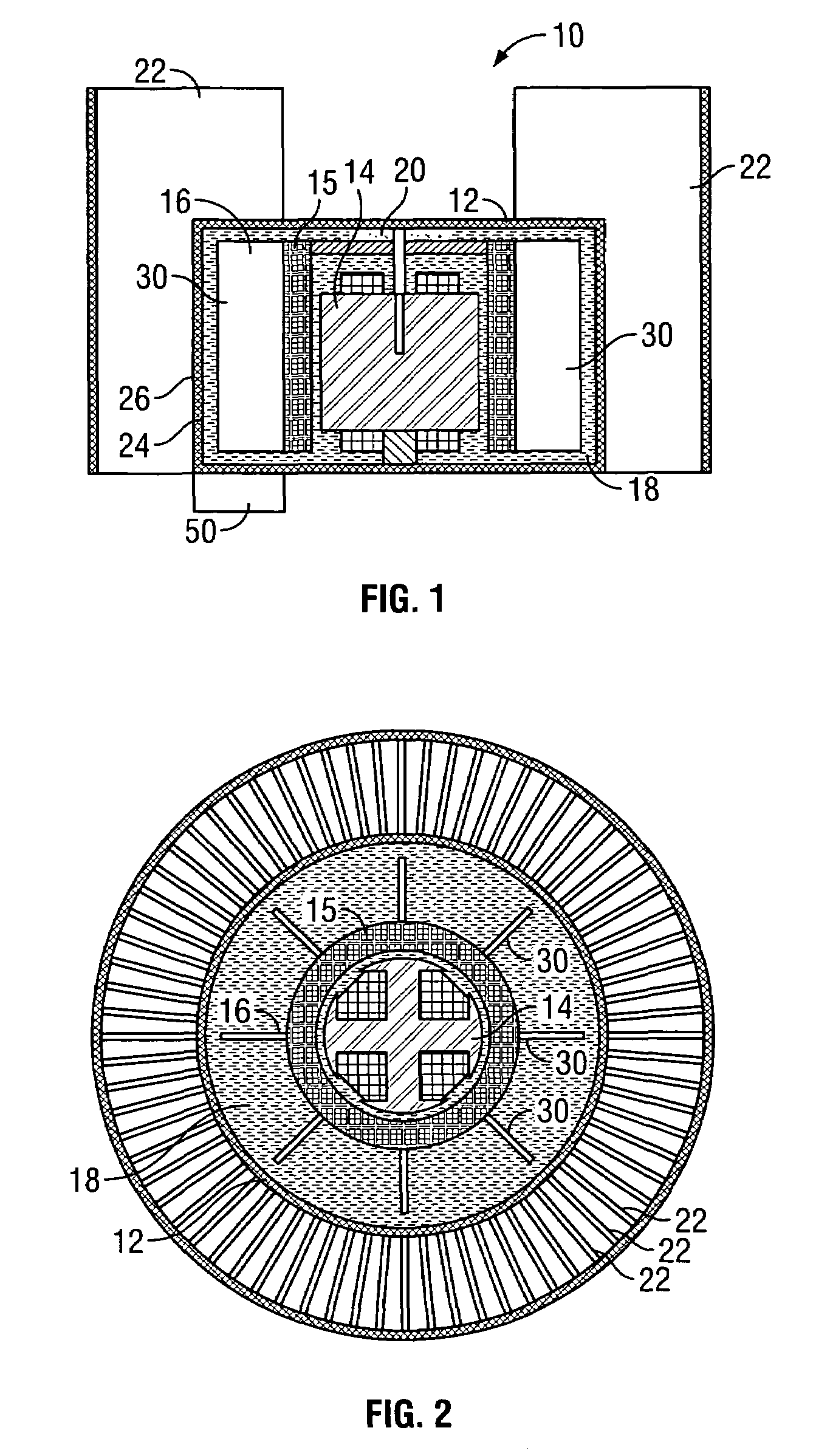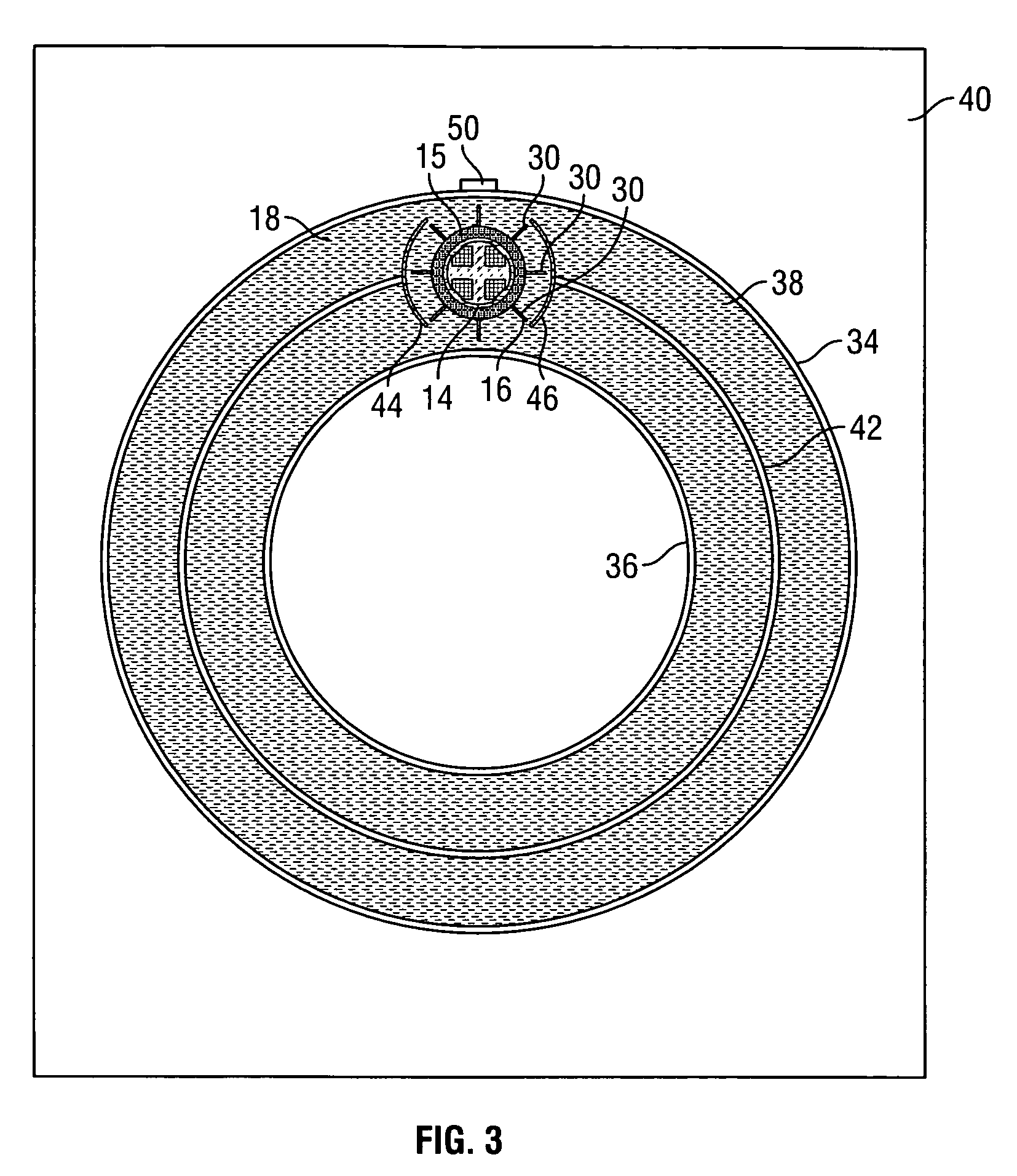Integrated liquid cooling device for electronic components
a technology of electronic components and integrated cooling devices, which is applied in the direction of domestic cooling apparatus, semiconductor/solid-state device details, lighting and heating apparatus, etc., can solve the problems of no effect on the satisfactory operation of the cooling device, and achieve the effect of increasing the cooling capacity of the integrated cooling device, increasing the surface area, and increasing the surface area
- Summary
- Abstract
- Description
- Claims
- Application Information
AI Technical Summary
Benefits of technology
Problems solved by technology
Method used
Image
Examples
Embodiment Construction
[0031]The present invention provides an apparatus for cooling an electronic component with an integrated cooling device that overcomes the limitations of the prior art. In the detailed description that follows, like numerals are used to denote like elements appearing in one or more of the figures.
[0032]Referring to FIG. 1, an embodiment of the integrated cooling device 10 of the present invention is depicted in a cross-sectional side view. The integrated cooling device 10 is comprised of a housing 12, a motor stator further comprising pole-pieces and windings 14, a cylindrical permanent magnet rotor 15, an impeller 16, cooling liquid 18, and cooling surfaces 22. The housing 12 of the integrated cooling device 10 has inside surfaces 24 and outside surfaces 26. FIG. 1 depicts the housing 12 as a right circular cylinder, although it should be appreciated that multiple geometries of housings are contemplated within the scope of the present invention. For example, hat-shaped, spherical, ...
PUM
 Login to View More
Login to View More Abstract
Description
Claims
Application Information
 Login to View More
Login to View More - R&D
- Intellectual Property
- Life Sciences
- Materials
- Tech Scout
- Unparalleled Data Quality
- Higher Quality Content
- 60% Fewer Hallucinations
Browse by: Latest US Patents, China's latest patents, Technical Efficacy Thesaurus, Application Domain, Technology Topic, Popular Technical Reports.
© 2025 PatSnap. All rights reserved.Legal|Privacy policy|Modern Slavery Act Transparency Statement|Sitemap|About US| Contact US: help@patsnap.com



